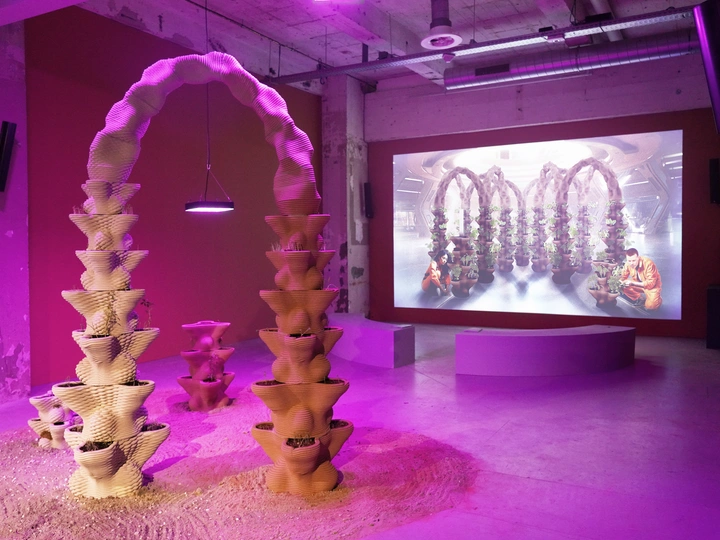ExoGarden: 3D-Printed Habitats for Earth and Space

Sandrine D'Haene
Rolf Hughes
Orestis Pavlidis
Volker Ruitinga
Izabela Swica
Viktor Udachin
Anna Vershinina
Polina Vershinina
Wieger Wamelink
Feng Xiong
Anna Vershinina is a PhD candidate in architecture at KU Leuven, Belgium. She specializes in Regenerative Architecture and BioDesign, leveraging living systems for built environments. Prior to starting her PhD, Vershinina obtained a Bachelor’s in Architecture from Newcastle University, UK, and a Master’s in Architecture from KU Leuven. Vershinina’s professional experience spans architecture firms in Germany and China. Vershinina shared her work at various design exhibitions, as well as notable scientific conferences, including the MEEP Symposium in Lucerne and the MELiSSA Conference, securing third prize in a Poster competition. In 2023, Vershinina received the prestigious Bio Art and Design Award with exobiologist Wieger Wamelink, leading to the ExoGarden installation, aimed at sustaining life in harsh environments on Earth and in space. Collaborating with regenerative design pioneers Rachel Armstrong and Rolf Hughes, Vershinina created Xeno and Xeno II installations, and she continues to work with them on further projects. Vershinina and Wamelink were recently nominated for the Falling Walls Award 2024.
Dr. Wieger Wamelink, an ecologist at Wageningen University & Research (WUR) in the Netherlands, focuses on the impact of nitrogen deposition and climate change on biodiversity, particularly plant species. He co-founded Food For Mars and Moon (FFMM) in 2013 to cultivate crops using Martian and lunar resources, studying the effects of heavy metals, cosmic radiation, and utilizing human waste for sustainable agriculture. His recent work involves growing mealworms on Martian regolith simulant to supplement astronaut diets. In 2024, he co-founded B.A.S.E. to design self-sufficient habitats for space travel. As an artist, Wieger was previously featured at the Design Museum in London with a film exploring potential settlement locations on Mars. Crop growth experiments using Mars and moon regolith simulants were showcased at various prestigious venues across the globe.
Humanity is confronted with numerous challenges, including the exacerbation of climate change through unsustainable practices, resulting in habitat destruction, biodiversity loss, and widespread displacement. As we pursue interplanetary settlement on celestial bodies like the Moon and Mars, the need for innovative habitats tailored to extreme conditions becomes evident. The future necessitates habitation solutions that repurpose local resources, including waste, reflecting the imperative for sustainability both on Earth and beyond.
In response to this challenge, Anna Vershinina partnered with Wieger Wamelink to develop the ExoGarden project. It is a prototype for a regenerative habitat that uses advanced 3D printing and space food production technologies to rapidly produce shelter and food in extreme environments.
ExoGarden resembles a series of interconnected arches forming a vertical garden system. The structure consists of modular elements 3D printed from local materials like clay or regolith. These hollow modules can hold Earth soil or Martian regolith for cultivating edible plants. The modules have a textured bioreceptive surface that promotes the growth of cryptogamic organisms that absorb carbon dioxide and pollutants. Organic waste is composted within the perforated core of the structure. The core also hosts worms, which aerate the soil, facilitate nutrient cycling, improve soil texture, and promote microbial activity, all crucial for plant growth.
By adopting the ExoGarden design approach, our buildings have the potential to become environmental assets, actively bioremediating and enhancing biodiversity. The incorporation of bioregenerative systems would lead to a significant reduction in waste, with much of it being reintegrated into the building's ecological cycle. These life-affirming and resilient strategies not only empower communities in challenging environments but also redefine the standards of habitation for the future.